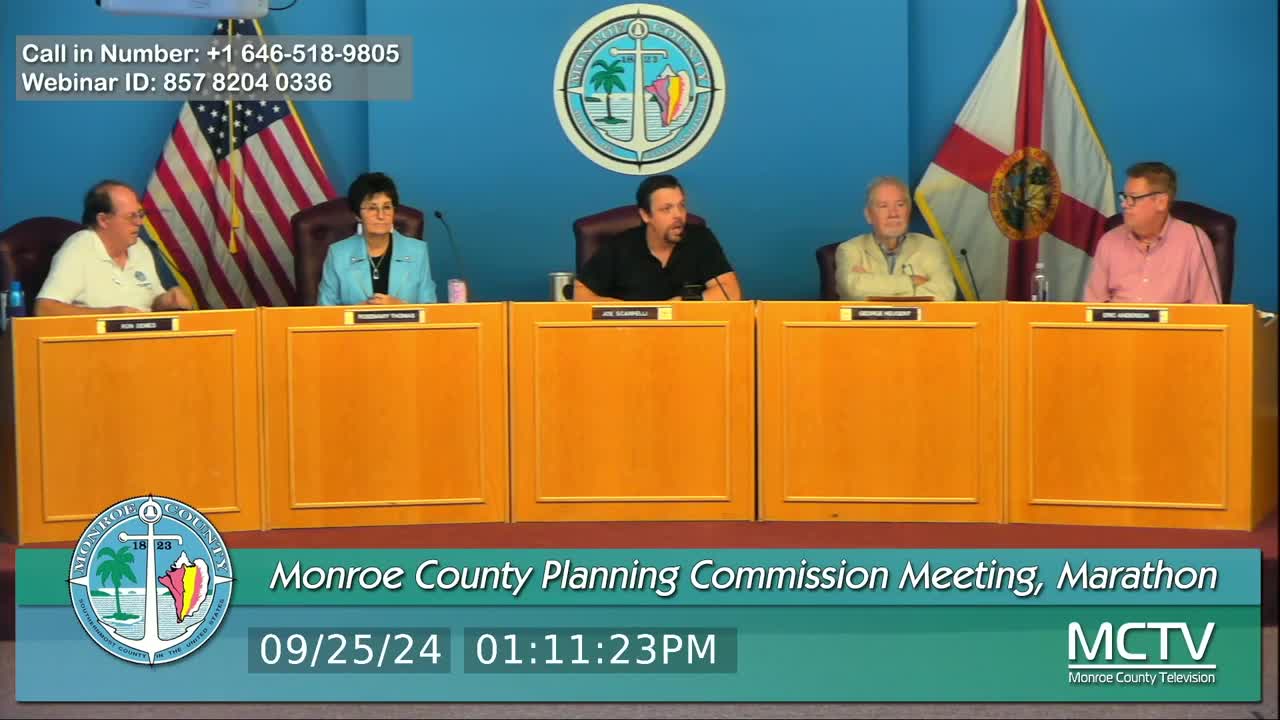Residents rally against controversial parking variance proposal
September 25, 2024 | Monroe , Florida
This article was created by AI summarizing key points discussed. AI makes mistakes, so for full details and context, please refer to the video of the full meeting. Please report any errors so we can fix them. Report an error »

In a recent government meeting, discussions centered around a contentious parking variance request for a large-scale development in Monroe County. The meeting highlighted concerns from local residents regarding the adequacy of parking provisions and the implications of granting the variance.
Don, a representative involved in the shared parking calculations, confirmed that the calculations were conducted multiple times and deemed compliant with county code by the former development director, Bridal Stein. He emphasized that these calculations were not part of the variance application currently under consideration.
However, local business owner Herrine Gershman voiced strong opposition to the variance, arguing that the developers had knowingly requested more parking spaces than the property could accommodate. She claimed that the financial hardship cited by the developers was self-created, as they were aware of the limitations of the 4.5-acre site from the outset. Gershman presented several points, including the misuse of a boat ramp by non-residents and the presence of additional vessels not accounted for in the parking calculations. She urged the commission to deny the variance, asserting that the developers had not disclosed critical facts about the project's parking needs.
Beth Fennell, a long-time resident and planning expert, echoed these concerns, recalling past development issues in the Keys and warning against a return to unchecked growth. She argued that granting the variance would set a dangerous precedent, allowing for increased density that could negatively impact the community and environment. Fennell cited Florida statutes that restrict granting variances based on self-created hardships and emphasized the potential detrimental effects on property values and public welfare.
The meeting concluded with a call for the commissioners to prioritize the interests of local residents over developers, as the community remains divided on the implications of the proposed parking variance. The outcome of this request could significantly influence future development in the area, highlighting the ongoing tension between growth and community preservation in Monroe County.
Don, a representative involved in the shared parking calculations, confirmed that the calculations were conducted multiple times and deemed compliant with county code by the former development director, Bridal Stein. He emphasized that these calculations were not part of the variance application currently under consideration.
However, local business owner Herrine Gershman voiced strong opposition to the variance, arguing that the developers had knowingly requested more parking spaces than the property could accommodate. She claimed that the financial hardship cited by the developers was self-created, as they were aware of the limitations of the 4.5-acre site from the outset. Gershman presented several points, including the misuse of a boat ramp by non-residents and the presence of additional vessels not accounted for in the parking calculations. She urged the commission to deny the variance, asserting that the developers had not disclosed critical facts about the project's parking needs.
Beth Fennell, a long-time resident and planning expert, echoed these concerns, recalling past development issues in the Keys and warning against a return to unchecked growth. She argued that granting the variance would set a dangerous precedent, allowing for increased density that could negatively impact the community and environment. Fennell cited Florida statutes that restrict granting variances based on self-created hardships and emphasized the potential detrimental effects on property values and public welfare.
The meeting concluded with a call for the commissioners to prioritize the interests of local residents over developers, as the community remains divided on the implications of the proposed parking variance. The outcome of this request could significantly influence future development in the area, highlighting the ongoing tension between growth and community preservation in Monroe County.
View full meeting
This article is based on a recent meeting—watch the full video and explore the complete transcript for deeper insights into the discussion.
View full meeting